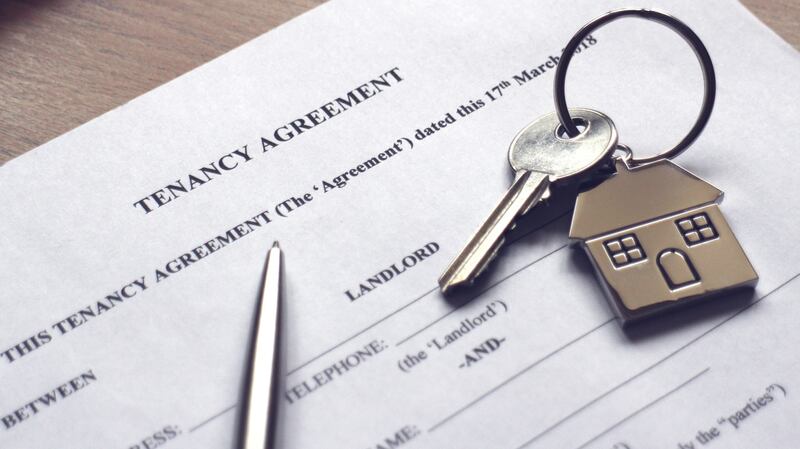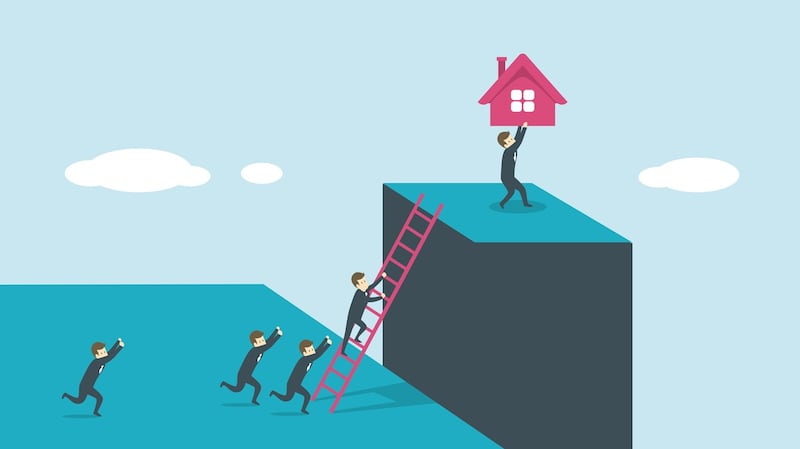The flipside of so many younger people being locked out of the housing market by rising prices is increasing wealth for a mainly older part of the population.
Housing is by far the most significant part of household wealth in Ireland – particularly for the large middle-income part of the country.
Less well-off people have struggled to get into the market for years – and typically are renters – while the wealthiest , also owning houses, usually have other assets.
Now, post pandemic , increasing numbers are being locked out of the housing market which threatens to undermine their ability to undertake the traditional Irish route of paying down a mortgage and gradually buying a valuable asset.
1. Rising wealth - even in a pandemic
The latest Central Bank figures show that the wealth of many households has risen during the pandemic for two main reasons – rising house prices and more cash in the bank.
Both result from the fact that a large part of the population has kept working – and earning – through the pandemic. This has helped support demand for housing while supply has been hit by closures – and so prices have continued to rise.
The Central Bank figures showed household net worth – assets minus liabilities – reaching a record €855 billion in the final quarter of last year. This was an increase of €49 billion during the year and equates to €171,769 per head.
During the last quarter of 2020, net wealth rose by more than €24 billion. This was accounted for by rises of €11.9 billion in the value of housing assets and a similar rise in financial assets, mainly bank deposits, with some small changes in other areas.
The rise in bank deposits may reverse as the economy reopens and people are freer to spend.
The Central Bank makes the point that the rise in wealth is in contrast to the fall in incomes many households experienced during the pandemic, with big falls in pay overall, increases in social transfers and a massive fall in consumer spending.
Household debt continue to fall and is now 8 per cent above the EU average compared to 30 per cent at the end of 2018.
The biggest losers have been less well-off households, many already renting – though of course loses have also been felt among many homeowner too , as shown by the demand for mortgage breaks.
The economic data for 2020 will be poured over and studied for many years to come.

2. Housing - the key store of wealth
Housing accounts for the bulk of household wealth , valued at €555 billion and it accounts around two thirds of all assets held by households.
Taking account of debt attached to housing, the net figure is still comfortably over half of all net wealth. Interestingly the concentration was even more marked a decade ago.
Heading into the last crisis , at the end of 2007 we see gross housing assets of €611 billion and total assets of €711 billion.
This reflects the even higher level of housing prices at the time and a higher level of debt – reducing the net wealth figure.
New research reported below estimates that around 57 per cent of the increase in net wealth between 2013 and 2018 was due to a rise in the value of the family home – and the figure rises further if investment property is counted in.
3. Deeper Links
The link between wealth and housing run deep. A recent paper by Central Bank economists David Horan, Reamonn Lydon and Tara McIndoo Calder – Household Wealth Inequality and Resilience – in the Economic an Social Review gives some key insights.
It is drawn from surveys done by the CSO in 2013 and 2018 called the Household Finance and Consumption Survey.
The paper shows that housing was the key factor in widening the wealth gap – increasing wealth inequality – between 1987 and 2018.
This was due in part to the need for homeowners to take on higher mortgages – and also a general reduction in the overall rate of home ownership. Interestingly the trend reversed a bit between 2013 and 2018 when wealth inequality fell, mainly due to a decline over the period in numbers in negative equity due to a rise in house prices.
Over that period Irish households had the largest increase in the wealth in the EU – this outperformance was almost entirely due to rising house prices.
In terms of the broader sweep of households, wealth is effectively housing, together with a few bob in the bank and in more cases now a voluntary pension. Importantly the research found that home ownership was practically non-existent in the bottom 20 per cent of least wealthy households.
With a strong correlation between income and wealth, it is fair to say that this group is generally lower paid and often younger – just the group trapped by high rents and with job prospects most damaged by the pandemic.
The richest households, meanwhile, tend to have other assets as well, and lower borrowings.
Looking at the longer term picture from 1987 to 2018, the research showed that the share of net wealth owned by the the wealthiest 10 per cent increased from 42 per cent to 50 per cent - though it had been as high as 53 per cent in 2013.
This was driven in part by an increase in financial wealth – shares, bonds, other investments – which was by far most notable among the wealthiest 1 per cent.
Meanwhile the net position of the middle groups, particularly younger households , was effected by the need to take on more borrowing to buy a house.

4. What are the policy implications?
The research and data show how central property is to the wealth of Irish households , with a typical life cycle of borrowing, paying down a loan, owning an asset and then inheritance to family, with the proceeds in turn helping them to repeat the cycle.
The risk of the housing crisis is that there is an increasing group locked out of the market – we can see that already the least wealthy 20 per cent are generally renters, and many may never move to ownership.
There are other ways to organise the financial life cycle, but pension provision, while rising , remains low and many people simply don’t want to remain as renters anyway into their older years and retirement.
The paper by the Central Bank researchers does show that the finances of household are more resilient now than before the 2008 crash. For an average younger households loans would be 1.5 times income, versus 2.5 times pre 2008.
This shows the value of the Central Bank mortgage rules – but in turn these make houses at current prices unaffordable for many. And so we get the help-to-buy scheme and the proposed shared equity plan.
The research also raises questions about tax. If you want to tax Irish wealth generally, then taxing property does so, but the reluctance to reform the local property tax shows the political barriers here.
Traditionally Ireland has also offered generous allowances for people inheriting family homes from parents.
If you want to tax the better off, then many are also holders of other assets. International experience of raising cash via this route is patchy, though in generally taxing higher income and higher wealth households more is likely to be on the agenda here and internationally.
It is worth noting that wealth and income are not perfectly correlated – particularly as younger, higher income households can have large mortgage borrowings. Of the top 10 per cent of wealthy households, half are in the top 20 per cent of incomes.
All this is now framed by the exit from Covid-19 and the complex economic impact this will have.













